Sophie's Choice
A Muse for Stephen Scott
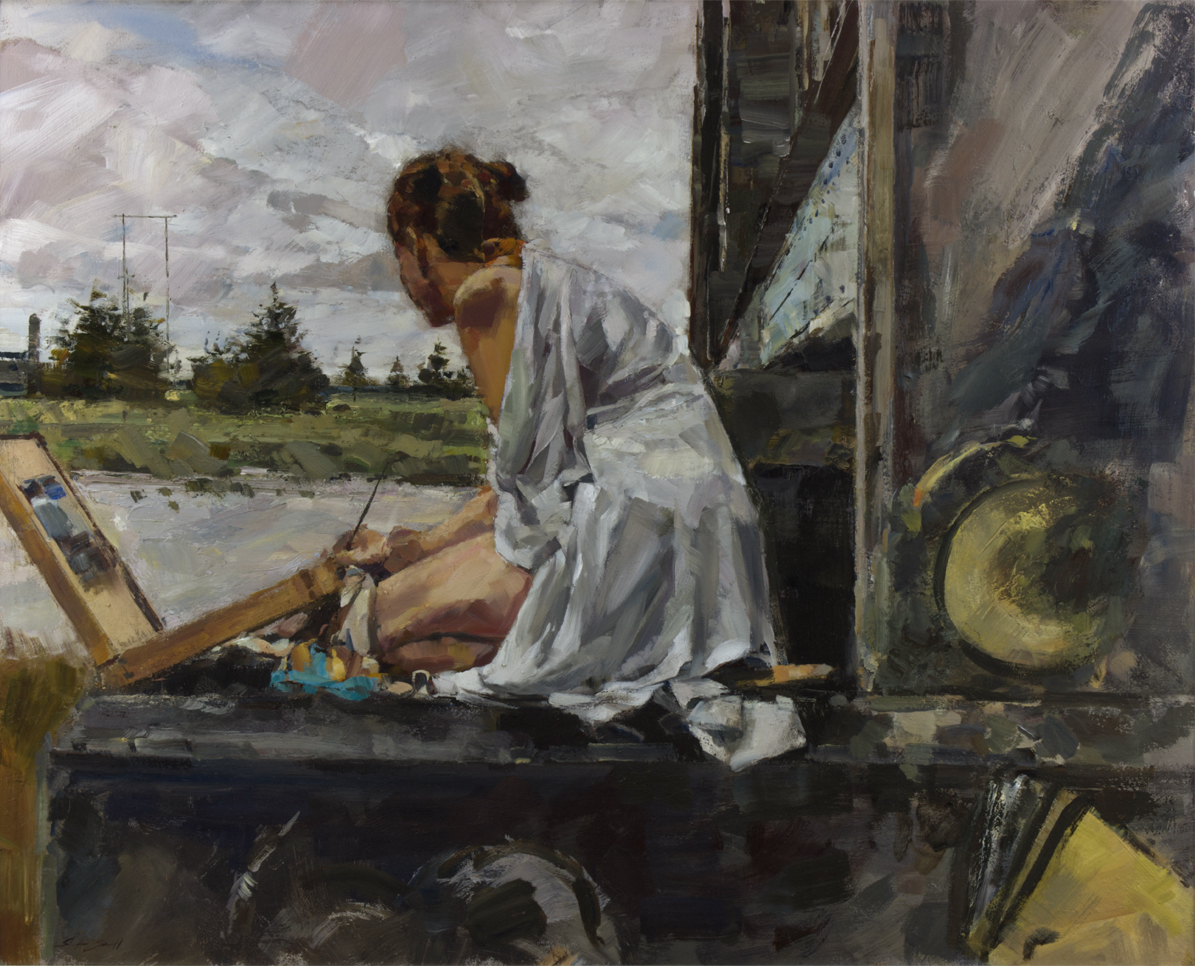
A muse, according to the Canadian Oxford Dictionary, is a poet’s inspiring goddess or the source of inspiration for creativity. Fredericton painter Stephen Scott is not a poet, but he has found his muse and certainly an inspiration for creativity in his wife Sophie Thériault Scott. Stephen has known Sophie since 2000 and they have been married since 2010. She has been the subject of many of his paintings since that first meeting, but being his muse is far more than being a model for him to paint. Her presence in his life has affected all of his art. After all, that is what a muse is supposed to do.
The history of art is full of the influences of muses not only in the visual arts, but in literature and music as well. Two painters who remind me of the relationship of Stephen and Sophie are Pierre Bonnard and Marthe de Meligny; and Alex Colville and Rhoda Wright. Bonnard and Colville saw and painted their wives not only as models, but as the unchanging object of their love as Scott continue to do. Artists can, and some do, live their lives as hermits although this seem to be more the case with writers than painters. I, as a writer, can have an imaginary muse, but it is not nearly as satisfactory as a real breathing one, although likely less complicated.
Over the last two years, due to COVID-19, Stephen has been more or less housebound in the company of Sophie which makes her participation as the subject of his painting even more normal than before. His studio is in his house (in the made over living room), and he is never more than a few steps from his easel. Sophie, who is an art teacher, has been home more than normal because of Covid. The opportunity for the two to come together through his art was the natural outcome.
There is another strong reason for Stephen to regard Sophie as his muse as she nursed him through a serious bout of cancer in 2013. Without her devotion I doubt that he would have survived, much less come back an even stronger artist than he was before. When I mentioned to a friend that I was writing about an artist’s muse one reaction I got was that muses were “sexual objects for the artists” and “how about men as muses to women artists”. The relationship of a muse is far more complex than being an object of sexual desire and there is no reason a man cannot serve as a muse to a woman. This leaves aside the option of same sex muses and artists. The idea of muse is more in the mind of both the artist and the muse.
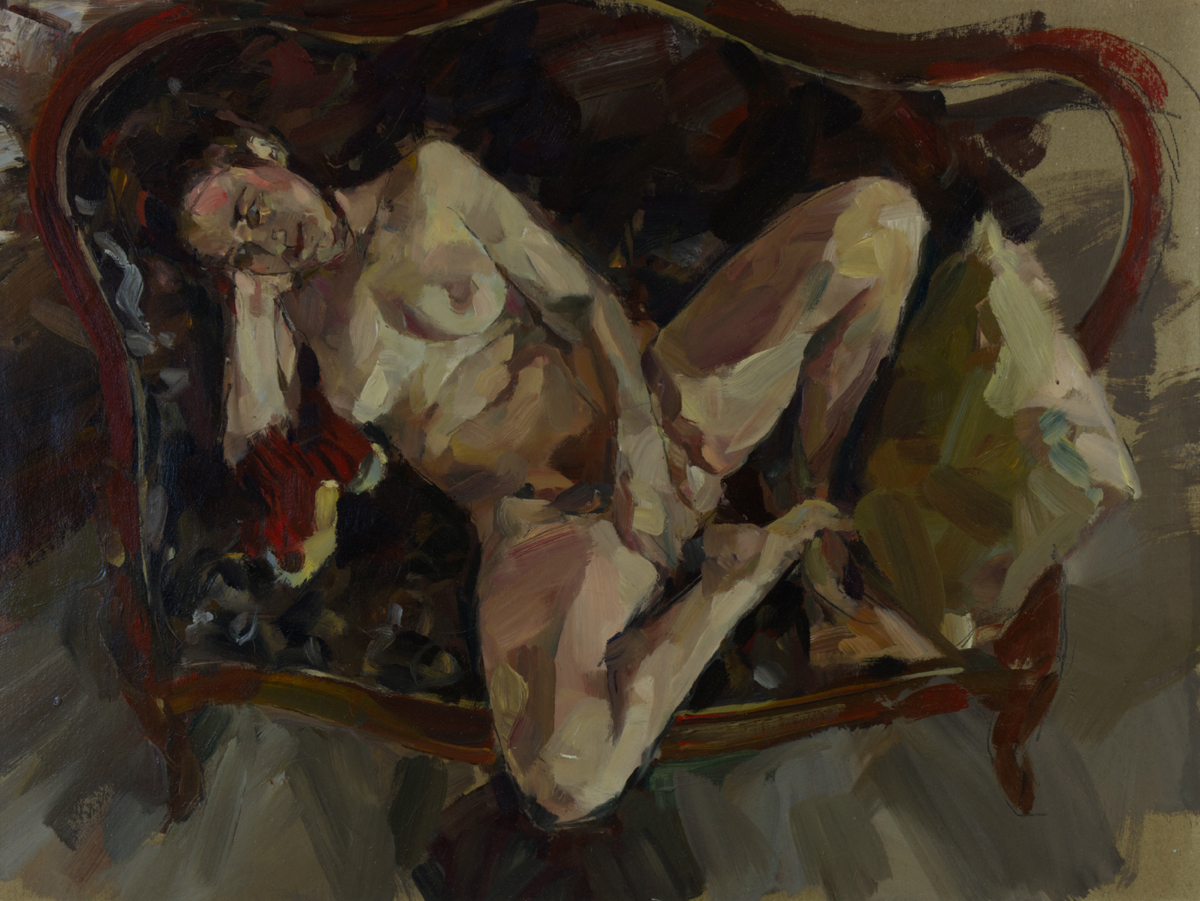
Stephen’s painting Nude on Sofa brings to mind Francisco Goya’s The Naked Maya (c. 1797-1800, Museo del Prado, Madrid), which reportedly is a painting of his great love and muse, the Duchess of Alba. While there is some debate as to whether the Duchess actually sat for the painting, there is no debate that Goya painted her several times and that their relationship is spelt out in his 1797 painting Portrait of the Duchess of Alba in Black (Hispanic Society of American, New York), where the Duchess points to the ground where she had traced the name Goya on the ground with her shoe. The point I am making about Stephen’s paintings of Sophie and Goya’s paintings of the Duchess of Alba is that the sitter is important in these cases—even though Stephen does not name her in his titles—as a particular individual rather than just a nameless subject for a painting.
People do not have to be art historians or art critics to enjoy or be even profoundly moved by art works. A deep knowledge of an artist’s life and the iconography of his or her work can certainly help in the understanding of their work. Stephen seldom identifies the subjects of his figurative works titling them in general terms like, Man in a Yellow Shirt, Hotel Bedroom, Woman Standing and so on. His circle of friends knows a painting of Sophie or other familiar subjects when they see them. Indeed, I am the Man in a Yellow Shirt. In the end it does not matter; people who do not know Stephen see them just as paintings and that is a good thing. I’m not sure that you will enjoy a Rembrandt portrait more of if you know it is one of Jan Six (1654, Six Foundation, Amsterdam). It is just a damn fine portrait of a man. The same goes for Man in a Yellow Shirt, but I am a good looking guy, nonetheless.
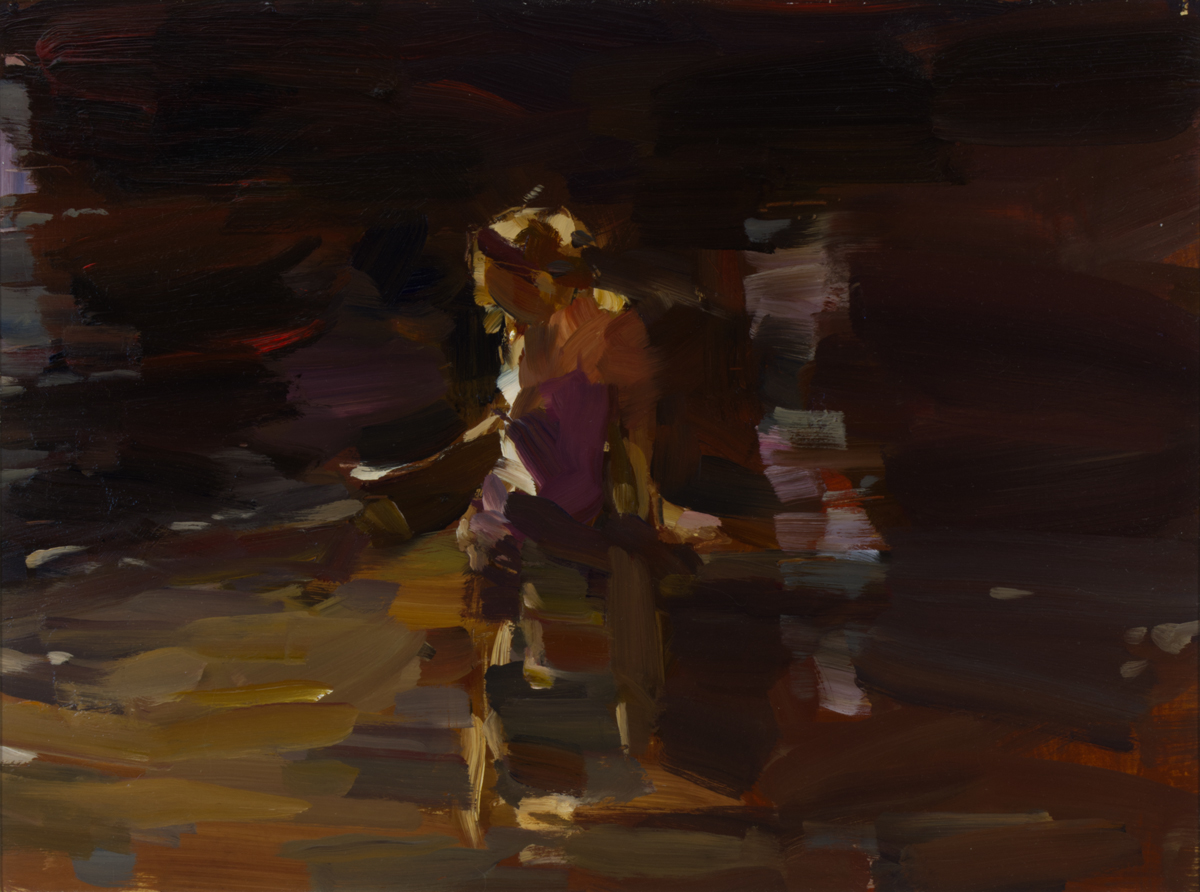
Keeping with Rembrandt, muses, and Stephen Scott. Rembrandt’s second wife, Hendrickje Stoffels, not only served has his model, but nursed him through bad health as well. However, I would like to compare Rembrandt’s painting of her Woman Bathing (1654, National Gallery, London) to Stephen’s painting of Sophie, The Stream. On the same topic, while Stephen’s painting is much looser in its painting style, the latter Rembrandt painting is the among the best of the artist’s free use of paint. However, the real point of comparison to Rembrandt is Stephen’s Self Portrait After Radiation. The self reflection of Stephen’s painting of himself at a particularly painful time in his life is very much on a par with late Rembrandt’s self portraits.
To end on a positive note, there is Stephen’s double portrait of himself and Sophie, Northern Gothic. Besides being a nod to Grant Wood ( American Gothic, 1930, Art Institute of Chicago.) it illustrates their firm partnership as man and wife and the real meaning of muse.
© Virgil Hammock, Sackville NB, Canada, 11 October 2021.
(An exhibition of Stephen’s Scott’s work opens on the 5th of November and runs until the 17th of December, The Uncertainty of Seeing: Painting of Stephen Scott, at the Saint John Arts Centre in Saint John, New Brunswick.)


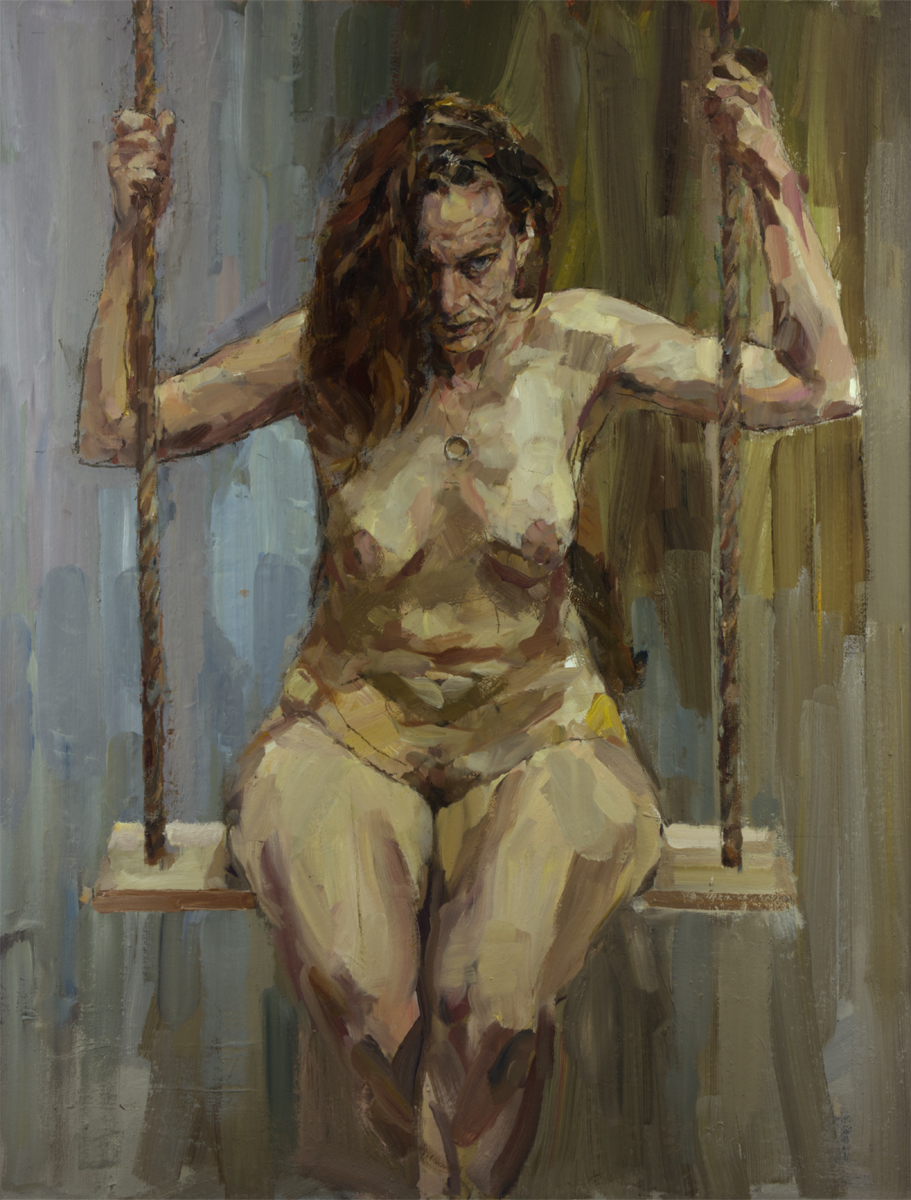

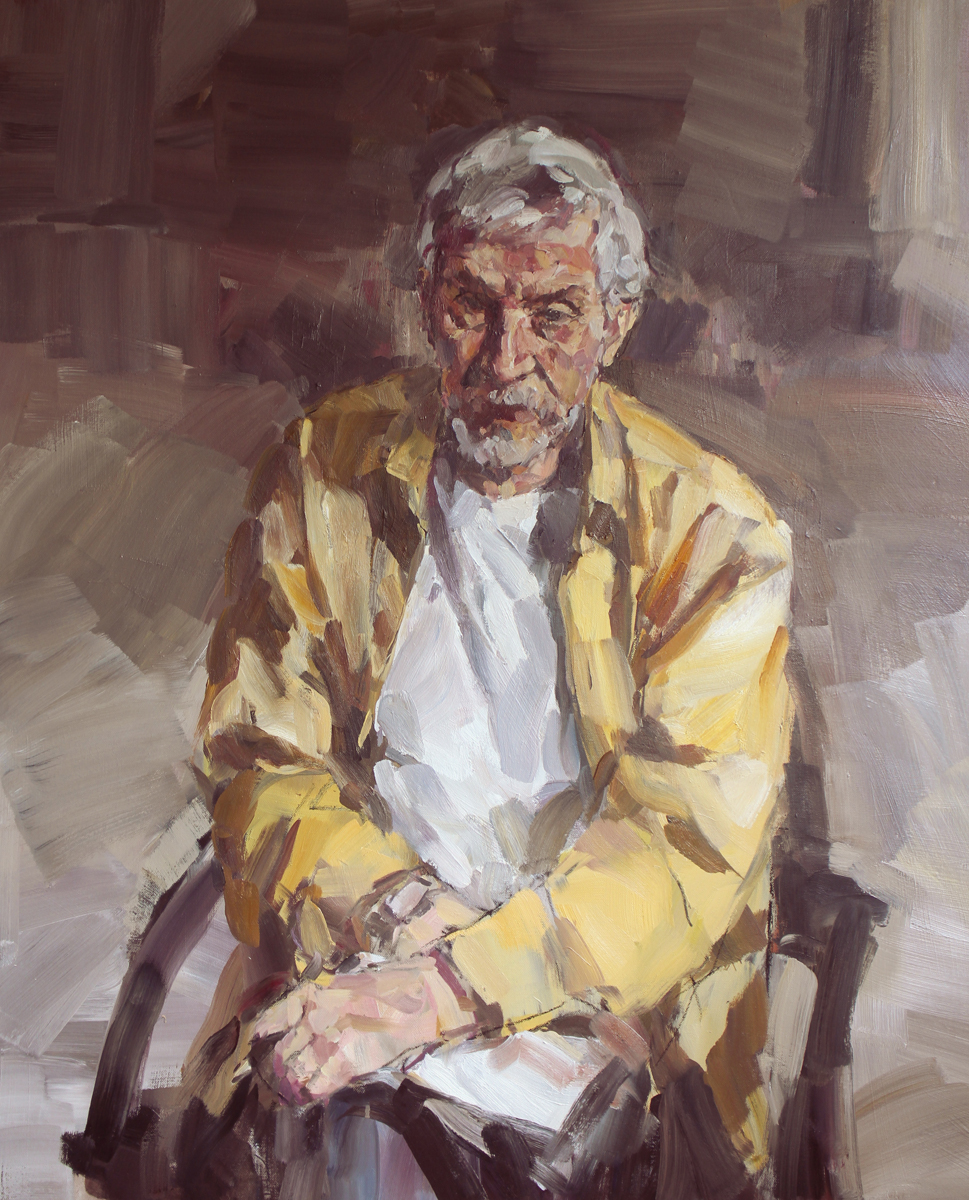
Artist

Stephen Scott has both a fine eye and hand. He often paints directly from nature and that gives value to the immediacy of his art. Stephen is also an unabashed romantic and that, in this time and age, is a very good thing when so many of us are trying to be pragmatic about everything in our lives. Today there seems to be little mainstream interest in landscape art perhaps because it does not fit readily into the Postmodern mode except perhaps as a vehicle for irony. But Stephen as a romantic — he paints landscape as a window to an understanding of nature, as a thing of beauty. There is only his sense of that what was before his eyes waiting to be discovered by him and now shared with us.
Links
stephenscott.ca
Links
Website: https://www.barryacearts.com/
~ Posted by Virgil Hammock